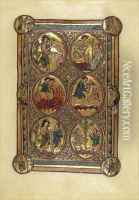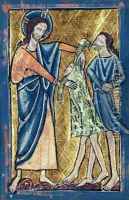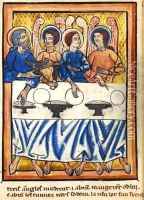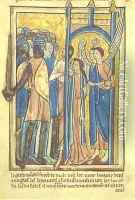William de Brailes Paintings
William de Brailes was an English illuminator, known for his distinctive work in manuscript illustration during the middle of the 13th century. He is one of the few English manuscript illuminators of this period whose name we know, thanks in part to the fact that he sometimes signed his works, a practice that was uncommon at the time. William de Brailes is associated with the production of illuminated manuscripts in Oxford and is considered to be one of the most significant artists of the Oxford illumination style.
His works are characterized by their lively narrative scenes, detailed figurative work, and the use of vibrant colors. De Brailes' illustrations often included religious themes, which was typical for the period, and he is known to have produced images for Psalters, Bibles, and other devotional books. One of his most notable contributions is the 'de Brailes Hours', which is one of the earliest surviving standalone English books of hours. It contains a series of full-page miniature paintings and is a key example of his artistic skill and the Gothic style of the period.
Although the exact details of William de Brailes' life are not well-documented, it is believed that he was active in Oxford between about 1230 and 1260, a time when the city was a significant center for learning and the production of illuminated manuscripts. His work reflects the influence of both English and Continental European artistic traditions, and his contribution to the art of illumination has been recognized as both unique and influential in the context of medieval English art.
Unfortunately, much like many artists of the era, the personal details of de Brailes' life remain obscure, and only a handful of signed works have been attributed to him with certainty. These surviving works, however, have been studied extensively and are housed in various museum collections, where they continue to be appreciated for their beauty and historical value. William de Brailes remains an important figure in the history of English art, particularly for his contributions to the craft of manuscript illumination during the Gothic period.









